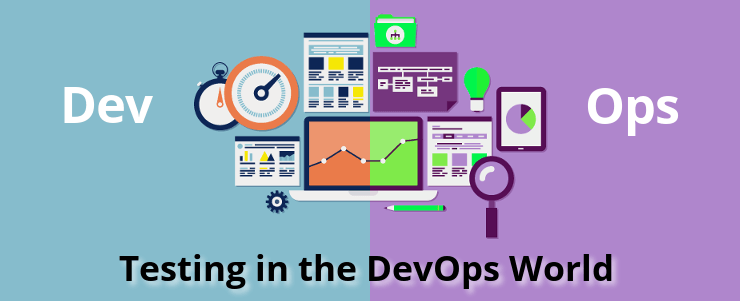Mobile Applications are the major channels for brands to establish healthy communications with their customers. Owing to the ever-growing demands of the customers, brands are focusing on technological solutions that are faster, qualitative, and convenient. Hence high-end technologies like DevOps are being implemented and being utilized to get efficient results.
DevOps short for Development and Operations is a methodology that comprises a streamlined SDLC. To ensure efficient results we need to ensure that every stage of the SDLC is automated enough. The aim of DevOps is to accelerate the development cycle and especially continuous integration and continuous delivery helps in delivering quick responses to their clients by availing ready to deploy codes. Now let’s see how and where can we use automation in the SDLC for DevOps
Automation for effective continuous testing:
In Continuous testing, automation testing takes place during the entire lifecycle of the application development lifecycle i.e. from planning, designing, development, testing to deployment, and monitoring. Since testing in a DevOps framework is performed on a continuous basis during the SDLC pipeline we need to manage the requirements of a continuous testing environment. These tasks involve establishing automated triggering between different systems in the pipeline, integrating multiple tests, tracking and predicting issues, facilitating continuous integration, and continuous delivery. All these tasks must be automated and this is how continuous testing must be executed.
Enable automation in a ci/cd pipeline :
Automation in a ci/cd pipeline ensures that appropriate software builds, data, test results, code changes are delivered to the appropriate test environments. Also, a uniform speed accelerates the complete ci/cd pipeline improving the efficiency of the application development. Also, developer teams can perform frequent code changes, QA teams can frequently test the builds, so this will enable the QA and the dev teams to push software changes frequently to the market. This way an automated ci/cd pipeline can be utilized to fulfill the dynamic requirements of the market.
Automate Code Development :
Automation in application development can facilitate frequent code changes to the development team. For Example, defining certain changes in the build and then triggering appropriate changes or process activities save time and also simplify the large and complex application development process. Check out DuploCloud’s platform engineering tool that can help combine, organize and automate software development.
Automate Monitoring:
Monitoring is performed by the operations team and it can be simplified by automating traceability and the issue tracking processes. Also devs and operations teams can collaborate internally to ensure that the SDLC works smoothly. For example, if the security member identifies the code issues, weeks after it was submitted, Devs already have a challenge in hand and will rectify the bug as soon as possible and commit the code. A strong feedback loop must be maintained between the development, operations, and the QA team, to eliminate the silos and bottleneck between the teams.
Conclusion
Automation testing is a must to deliver the application on time. As we have seen how automation testing can be implemented at various stages of the DevOps SDLC to simplify the development cycle by many folds. In pCloudy which is a continuous testing platform, we support multiple integrations like Appium, Jenkins, Jira, Github, Slack, etc which helps in constructing a streamlined, automated, and collaborative pipeline. Hence pCloudy can be your ultimate continuous testing platform for delivering the quality applications in the DevOps environment.
Check out this infograph for a better understanding. For More, Follow Our Blog, Techdee.

